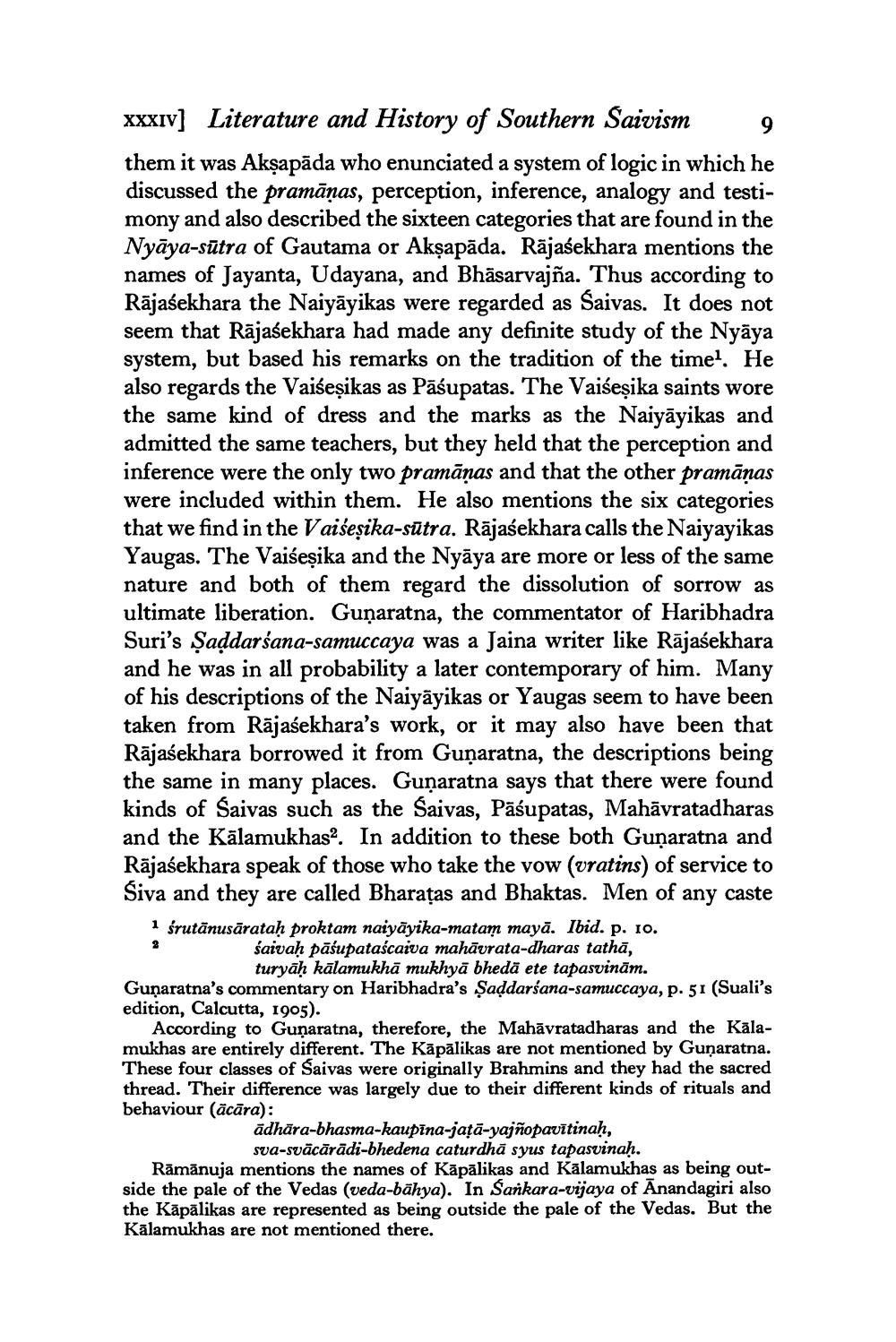________________
XXXIV] Literature and History of Southern Saivism 9 them it was Akşapāda who enunciated a system of logic in which he discussed the pramāṇas, perception, inference, analogy and testimony and also described the sixteen categories that are found in the Nyāya-sūtra of Gautama or Akşapāda. Rājasekhara mentions the names of Jayanta, Udayana, and Bhāsarvajña. Thus according to Rājasekhara the Naiyāyikas were regarded as Saivas. It does not seem that Rājasekhara had made any definite study of the Nyāya system, but based his remarks on the tradition of the time. He also regards the Vaiseșikas as Pāśupatas. The Vaiseșika saints wore the same kind of dress and the marks as the Naiyāyikas and admitted the same teachers, but they held that the perception and inference were the only two pramāṇas and that the other pramāṇas were included within them. He also mentions the six categories that we find in the Vaišeşika-sūtra. Rājasekhara calls the Naiyayikas Yaugas. The Vaiseșika and the Nyāya are more or less of the same nature and both of them regard the dissolution of sorrow as ultimate liberation. Gunaratna, the commentator of Haribhadra Suri's Şaddarśana-samuccaya was a Jaina writer like Rājasekhara and he was in all probability a later contemporary of him. Many of his descriptions of the Naiyāyikas or Yaugas seem to have been taken from Rājasekhara's work, or it may also have been that Rājasekhara borrowed it from Gunaratna, the descriptions being the same in many places. Gunaratna says that there were found kinds of Saivas such as the Saivas, Pāśupatas, Mahāvratadharas and the Kālamukhas. In addition to these both Gunaratna and Rājasekhara speak of those who take the vow (vratins) of service to Siva and they are called Bharatas and Bhaktas. Men of any caste 1 śrutānusāratah proktam naiyāyika-matam mayā. Ibid. p. 10.
saivah pāśupataścaiva mahāvrata-dharas tathā,
turyāḥ kālamukhā mukhyā bhedä ete tapasvinām. Gunaratna's commentary on Haribhadra's Şaddarśana-samuccaya, p. 51 (Suali's edition, Calcutta, 1905).
According to Gunaratna, therefore, the Mahāvratadharas and the Kālamukhas are entirely different. The Kāpālikas are not mentioned by Gunaratna. These four classes of Saivas were originally Brahmins and they had the sacred thread. Their difference was largely due to their different kinds of rituals and behaviour (ācāra):
ādhāra-bhasma-kaupīna-jațā-yajñopavītinah,
sva-svācārādi-bhedena caturdhā syus tapasvinah. Rāmānuja mentions the names of Kāpālikas and Kālamukhas as being outside the pale of the Vedas (veda-bāhya). In Sankara-vijaya of Anandagiri also the Kāpālikas are represented as being outside the pale of the Vedas. But the Kālamukhas are not mentioned there.
saioa!




